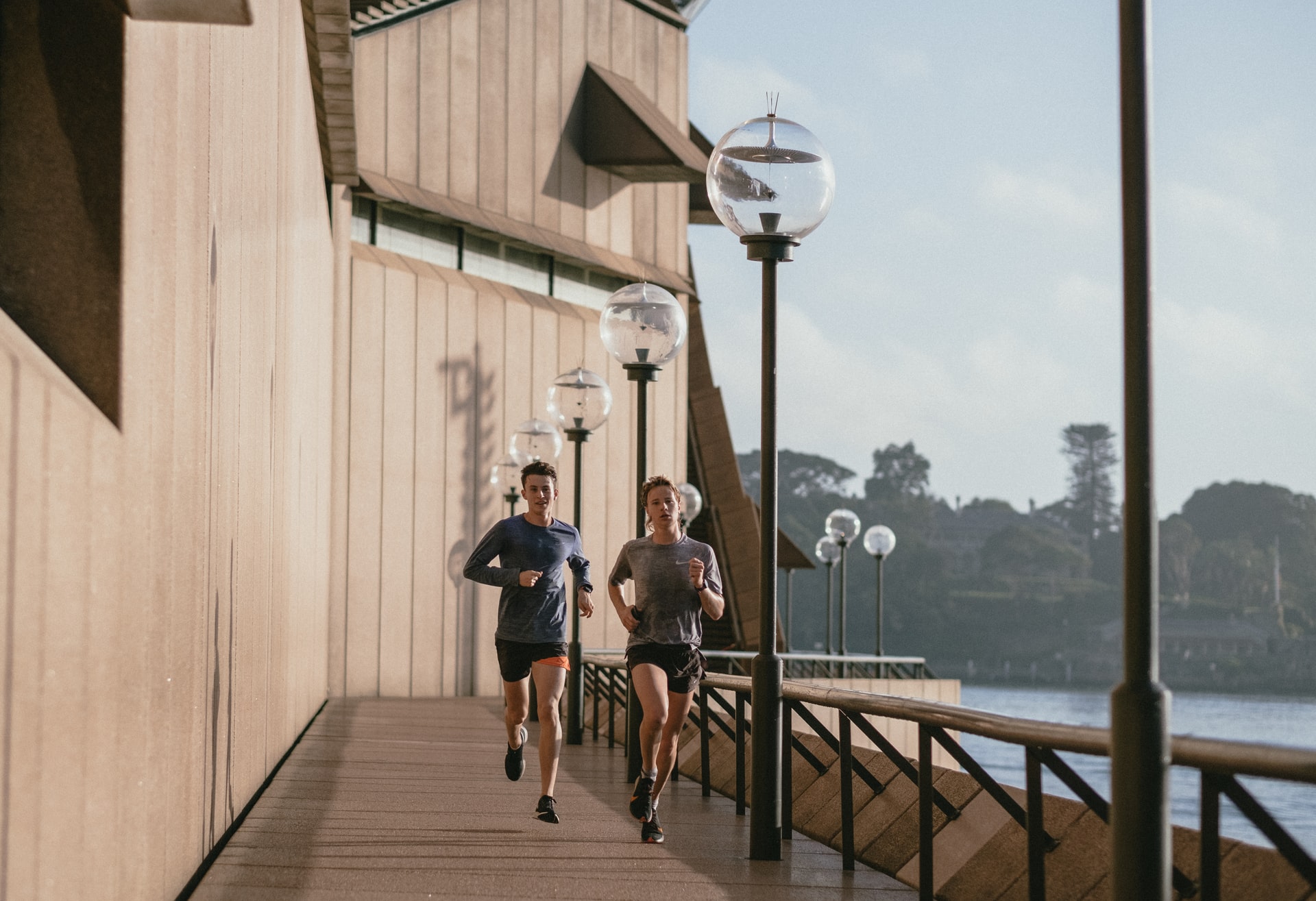
Running in hot weather is the most difficult challenge for a runner. Anyone who jogs regularly has to face it. In this article we will suggest what to pay attention to when jogging in hot weather and how to avoid overheating.
Running in the heat is a huge stress on the body, and if you approach it wrongly, you can seriously harm yourself. So before you decide to do it, make sure that there are no contraindications to it. Only then can you ensure that you are properly prepared for running during high temperatures.
If you are preparing for a competition, you need to train in similar conditions, for example, if you will be running a city marathon in the sun, then 1-2 training sessions per week should be held in the city. In doing so, all precautions should be observed – hydration, sun protection, proper clothing.
In the heat, forget about your usual running pace. Start running slower, gradually you will find the optimal pace for the heat. And with good adaptation, there is a chance that you will get closer to your regular pace.
Run early in the morning or in the evening before sunset to avoid being exposed to direct sunlight. Running is a serious strain on the cardiovascular system, and in hot weather (when the temperature exceeds 25 degrees Celsius) it puts even more strain on it. Plan your route in shaded areas. Avoid open spaces in the city. Asphalt and buildings further warm the air, so get your workout from a park or forest.
Monitor your pulse rate. The most convenient way to do this is with a smartwatch or a special sports heart rate monitor. Try to avoid intense workouts and run at a low or medium heart rate.
Avoid dehydration. Take a bottle of water with you to your workout and drink regularly. Especially if you practice long-distance running. It’s not just about water: valuable trace elements leave the body with sweat, especially in hot weather. Reach for isotonic drinks that restore the body’s water-salt balance.
In hot weather, feet swell slightly, regardless of the time of day, so it is better to choose shoes half a size larger made of lightweight, breathable materials.
Don’t run with your head uncovered, even if you intend to stay in the shade for the entire distance. A hat or scarf is the best protection against sunstroke or heat stroke. In addition, any headgear collects sweat from your forehead and prevents it from dripping into your eyes. Some sports brands produce hats with a special heat-reflecting circle.
For running in the heat, it is better to choose light, bright clothes. The laws of physics always work more efficiently than the technologies of sportswear manufacturers – it will certainly be less hot in a white T-shirt than in a black one. Also pay attention to ensure that the fabric is breathable.
Don’t neglect to protect your eyes from ultraviolet radiation – wear sunglasses.
In hot weather, experienced runners recommend regularly wetting your cap with water, preferably cold. At some competitions, points with sponges of water are set up along the route, and sometimes refrigerators with ice. There are several areas of the body that require cooling for the body to run at a normal pace: the head, the back of the head and down the spine, the area around the liver and the area around the heart.
main photo: unsplash.com/Kate Trifo